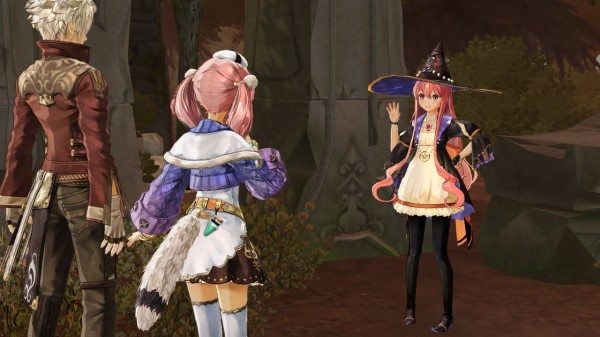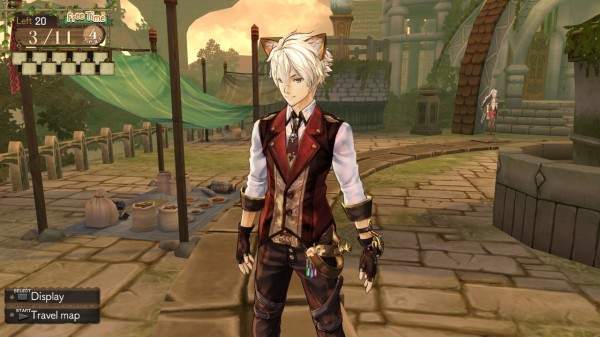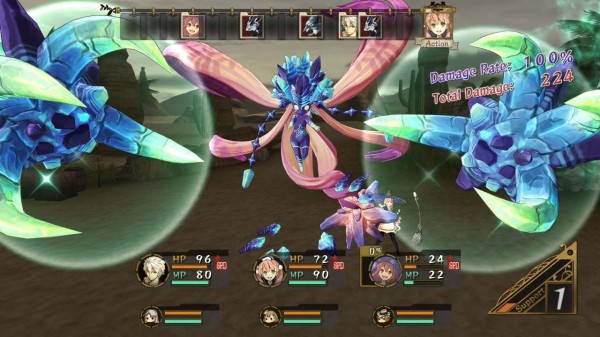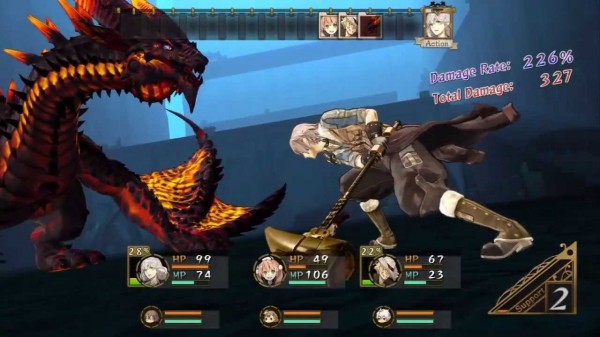
Atelier Escha & Logy: Alchemists of the Dusk Sky PS3 Review
The Atelier series must be enjoying some sleeper success for Tecmo Koei, since for the past five years there has been a new Atelier game for the PlayStation 3. Because the series isn’t as big as Call of Duty, it doesn’t get noticed for its annual release. It’s also very unusual for an RPG series to get a yearly release, but Atelier is just doing that, and you know what? I don’t really care that it is, because once again Tecmo Koei has brought us another Japanese title that isn’t about saving the world or blowing stuff up, but about having joyous and charming fun with a very light-hearted theme. Even though the series might not change much with each sequel, it is different from the abundance of military themed shooters from various developers that hit every year. The most important thing is that the developers, Gust, keep building on the concept to improve the Atelier model.
Atelier Escha is set roughly around four years after Atelier Ayesha, which was last year’s game that moved the location of the series to a new land called Dusk. What’s new for the Atelier series is that Atelier Escha is the first time the series has offered dual protagonists – the player must pick between either Escha Malier or Logix “Logy” Fiscario to be the main character, with the other character being a side kick to whoever you pick. This is actually an interesting inclusion, because while the story doesn’t change all that much between the two (there’s small variations in scenes depending who you pick), their gameplay is slightly different and will appeal to two different audiences. Escha is more traditional Atelier, in which she’s the innocent, ditsy alchemist and the player uses her to fulfil the daily routines of an alchemist. Picking Logy on the other hand turns the game into a more typical JRPG, with target jobs focused more on exploring. You can also make Escha do a lot of the alchemy work automatically, meaning that playing Logy can be a more relaxing situation for people who want to lay back on some of the alchemy mechanics. Logy, instead, can create weapons and armour, allowing him to help the team through conventional means.

Both characters begin their journey as new recruited civil servants for the government. Logy has moved from the big city, known as Central City, for some unexplained reasons, while Escha is a local villager of Colseit, and is the only person that knows alchemy in the town (a typical trademark story of the series). Once the introduction phase is over, it’s soon revealed that these two need to go explore the unexplored ruins that lie beyond the sky. Getting there requires building an airship and making new friends to help with the adventuring. This is where fans will be familiar with the Atelier time limit gameplay, as players need to finish assignments within the allotted time and move to the next phase and eventually map out the ruins to find out what hides within. Each Atelier game features a story that is less melodramatic and smaller in scope compared to most RPGs. Last year’s title was about Ayesha looking for her lost sister, while Atelier Escha is about the two characters achieving their dreams.
Managing time has been a staple feature of the series, and it’s once again a factor in the quest system for Atelier Escha. What I have seem to notice is that the time factor seems to becoming less strict with each game. Atelier Ayesha revamped the system, so that you had to accomplish many quests within a three year time limit. In Escha, this time limit has been changed to how older games did it. The player is given a major quest to accomplish within the span of four months. If you miss the deadline, then you’re penalised with what I think is less rewards; however, since completing the main quest is extremely easy to do before the deadline hits, I never missed one. More challenging is trying to finish the side missions that build on top of the major quest. These are optional, but finishing as many as possible before the deadline will offer bonus points towards levelling up your rank, making the next payday a bigger cheque.

Various activities will tick down the clock. Cooking up a recipe in the cauldron will take a certain amount of days depending on how difficult the item is to create. This can be sped up as Escha levels up her alchemy level, done by simply continuing to keep crafting items and gaining experience points. Using alchemy is easy to grasp. It boils down to picking the item you want to make, and then making sure you have the right category of ingredients, or in some cases, the exact ingredient, to craft it. If you do, then you pick which to use (various stats of the ingredients affect the quality of the product, with some even offering bonus stats), then buff the product by using CP against the elements to put their stats into the final product. It’s not as complicated as I may make it out to be, and the system in play allows for a lot of experimentation to see how a material can change the final product outcome.
Exploring also uses days up, the further a location sits from town, the more days it takes to travel there. Once inside a zone, time will not move, but, if you participate in harvesting glowing objects placed around the map, this will cause a clock hand to move on a metre. Harvesting is very important, as it supplies a lot of the materials for alchemy, the more items you have, the more products you can produce. Picking up enough ingredients will cause the handle to click round and pass on to the next day. Again, your only worry in managing time is to fulfil the side quests, if you get the main quest finished before doing anything else, you’ll have plenty of free time to go exploring until the four months are over.

Atelier Escha features a classic turn-based combat system, which has changed for the better since Ayesha was battling her way through the forest. A party can consist of up to six characters, with three on the front and three on the back. The three front members are the meat of the team, having the ability to use all of the battle system’s mechanics, such as attacking, using items, using skills or fleeing, just like many other turn-based JRPG.
The back row are special, these three units can be called up with support attacks, which use an amount from the support gauge to either do an additional attack or help defend a unit without wasting a turn for a character that sits on the frontlines. A character can only support once per character’s turn, but all five could support an attack if the player has the required amount of metre. Some support moves also allow the characters to switch places – normally available outside of battle – offering some tactical advantage for intelligent players. The battle system itself is created in a way that makes it a snap to understand, but these extras built on top of the combat make Atelier Escha a fast-paced, fluid, strategic battle system without overcomplicating things – it’s the best combat for an Atelier game on the PlayStation 3 so far.

For most of the game, Atelier Escha is rather laid back. There’s not much challenge from the battles until the last quarter of the game, where the final year unlocks and you are opened up to incredibly hard boss fights. It’s a strange stone in the difficulty scale, going from such an easy ride into a pool of treacle. If you are prepared well, then the jump in difficulty isn’t so bad, but since it comes out of the blue with no warning and players have been cultured by the game to get through in such a casual manner, it’s a bit of surprise when the spike happens.
A game that is as warm and friendly as Atelier Escha, it’s good to know that the art style and varied colour palette backs up this theme. Cel-shading is used, but it’s done in a way that makes it display with a darker tone, giving it a distinct style that makes for some gorgeous character models. The environment doesn’t get the same treatment, but what they lack in detail is made up with variety. One thing that is off about the presentation is that the animation comes across robotic, and the lip syncing often appears off-time, but overall, it’s a pleasant look that works well with the game’s tone. When it comes to voice acting, it’s a mixture of good and poor. A lot of the main cast are decent, but some of the popular NPCs are a bit iffy in delivering their lines. If it annoys you, you can always switch to the Japanese language, a first for Tecmo Koei since taking over Gust, and is promising that Japanese audio will be available in every Atelier game from now on.

Atelier Escha & Logy: Alchemists of the Dusk Sky is a charming little JRPG that is bundled with lots of happiness. It won’t win awards for innovation, but it does build on an existing framework in a positive manner. Atelier Escha & Logy feels made to lure in newcomers to the series, so the hardcore fans might have issue with the challenge, but I think existing fans should still have fun with the retuned combat system that is reminiscent of the old PS2 games. In a phase of gaming that seems to have everyone up in flames with hatred, murder, and all other kinds of nastiness, it’s nice to be able to just sit down with a game that is nothing but heart-warming and pure fun, with a story different from the norm in the genre. For anyone who wants to sit down on a couch after a hard days work and play a JRPG that will craft a smile on your face, then Atelier Escha & Logy comes recommended.
